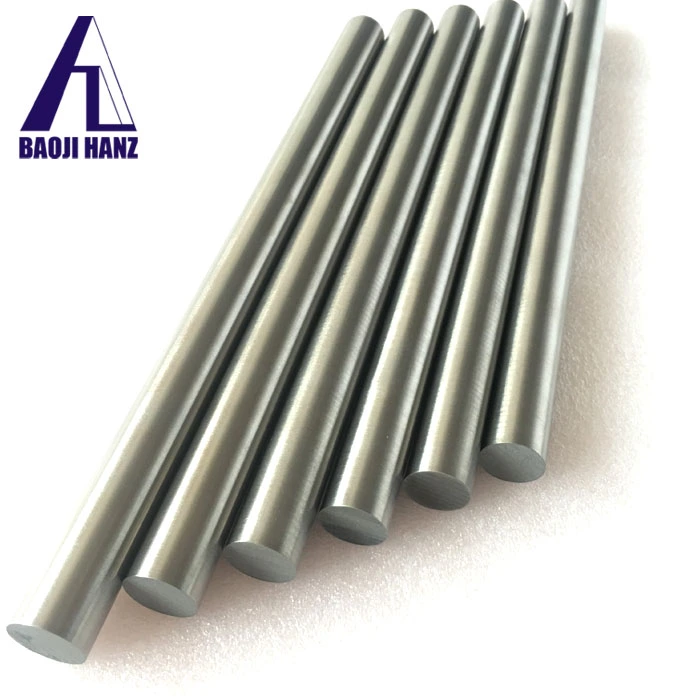Do nitinol rods retain shape?
2024-07-25 19:15:18
How Do Nitinol Rods Work?
Nitinol, an acronym for Nickel Titanium Naval Ordnance Laboratory, is famous for its ability to return to a pre-set shape when heated to a specific temperature. This phenomenon, known as shape memory, occurs because of the alloy's ability to undergo a phase transformation between its two crystal structures: austenite and martensite.
In its low-temperature phase (martensite), nitinol can be easily deformed. However, when heated above its transformation temperature, it reverts to its high-temperature phase (austenite), returning to its original shape. The transformation temperature can be precisely controlled through the alloy's composition and heat treatment process (ASME) (Today's Machining World).
Do Nitinol Rods Retain Their Shape After Deformation?
Yes, nitinol rods can retain their shape after deformation, provided they are heated above their transformation temperature. The process of setting a shape involves constraining the nitinol in the desired form and heat-treating it at around 500°C, followed by rapid cooling. This 'trains' the nitinol to remember the new shape (Today's Machining World) (matthey.com).
When the rod is later deformed at a temperature below its transformation point, it will retain the deformed shape. However, once it is reheated above the transformation temperature, it will return to its pre-set shape. This property is crucial for applications like stents, which must be deformed to fit into a catheter and then expand to support blood vessels once deployed inside the body (ASME).
Why Are Nitinol Rods Used in Medical Devices?
Nitinol's unique properties make it ideal for medical applications. Its biocompatibility, corrosion resistance, and ability to return to a predefined shape are especially valuable in minimally invasive procedures. For instance, nitinol stents can be compressed to fit into a catheter and then expand to support blood vessels, reducing the need for more invasive surgery (ASME) (Today's Machining World).
Moreover, the superelasticity of nitinol, which allows it to undergo significant deformation without permanent shape change, is beneficial for dynamic implants like heart valves and bone anchors. These implants must withstand repeated stresses and strains without failing, making nitinol an optimal choice (ASME).
How Is the Shape of Nitinol Rods Controlled?
Controlling the shape of nitinol rods involves precise adjustments in the alloy's composition and the thermal processing steps. The transformation temperature can be fine-tuned by altering the nickel-titanium ratio and through specific heat treatments. Typically, shape-setting involves heating the alloy while it is held in the desired shape, followed by rapid cooling. This process sets the rod’s shape at the atomic level, ensuring it will return to this form when reheated (matthey.com) (Today's Machining World).
Nitinol's ability to remember shapes and revert to them upon heating is utilized in various industries. For instance, in the aerospace sector, nitinol is used in actuators and other components that must change shape to perform specific functions at different stages of flight (ASME).
Can Nitinol Rods Withstand High Stress and Strain?
Nitinol rods exhibit superelasticity, allowing them to endure significant strain (up to 8%) without permanent deformation. This property arises because, above the transformation temperature, nitinol can form stress-induced martensite, which accommodates large strains and then returns to the austenitic phase when the stress is removed. This makes nitinol highly resilient compared to other metals, which typically cannot tolerate such strains without deforming permanently (SpringerLink) (Today's Machining World).
This superelastic behavior is crucial for applications requiring materials to undergo repeated deformation cycles without losing their shape. For example, eyeglass frames made from nitinol can bend significantly without breaking, ensuring durability and longevity (Today's Machining World).
Conclusion
Nitinol rods' ability to retain their shape and endure high stress and strain makes them indispensable in many high-performance applications. From medical devices that save lives to advanced aerospace components, the unique properties of nitinol continue to drive innovation and enhance the capabilities of various technologies. Understanding the science behind nitinol's shape memory and superelasticity helps engineers and scientists develop better, more efficient solutions for complex challenges.
References
- ASME. Metal That Remembers Its Shape. Retrieved from ASME.
- Johnson Matthey. Nitinol Shape Setting. Retrieved from Johnson Matthey.
- Today’s Machining World. Developing a Good Memory: Nitinol Shape Memory Alloy. Retrieved from Today’s Machining World.
- Shape Memory and Superelasticity. Myths and Truths of Nitinol Mechanics. Retrieved from Springer.
